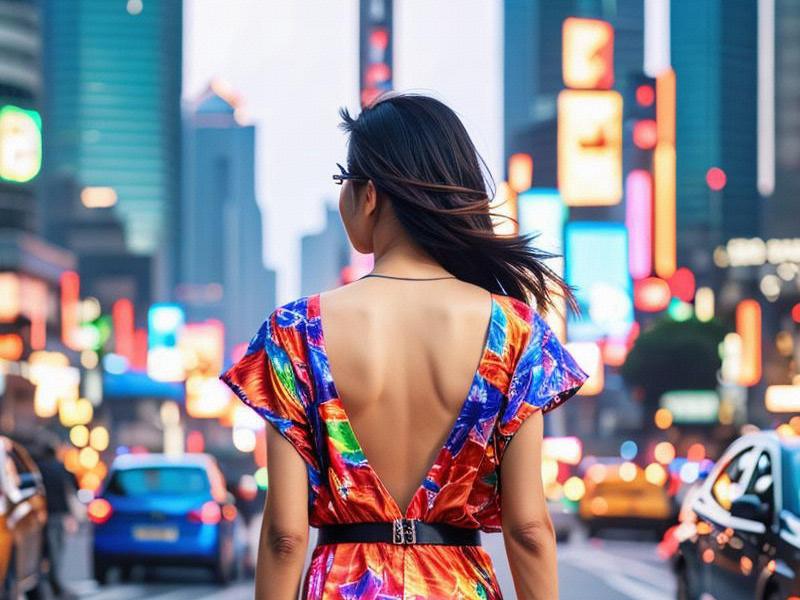This article delves into the dynamic evolution of Shanghai, a global metropolis that seamlessly blends the old with the new. It explores the city's vibrant urban core and its exurbs, highlighting the cultural fusion, architectural marvels, and the harmonious coexistence of tradition and modernity that define Shanghai's unique identity.

Shanghai, a name that resonates with the rhythm of modernity and the whispers of history, stands as a testament to China's rapid urbanization and cultural evolution. As the largest city in China and one of the world's most populous urban centers, Shanghai is a vibrant metropolis that seamlessly blends the old with the new. Its skyline, a symphony of steel and glass, tells the story of a city that is both deeply rooted in tradition and fiercely embracing the future.
The heart of Shanghai, known as the Bund, is a living museum of colonial architecture. Here, the Art Deco facades of buildings built in the early 20th century stand in stark contrast to the modern skyscrapers that have sprung up in recent decades. The Bund offers a glimpse into the city's colonial past, with its historical buildings now housing banks, hotels, and restaurants. At night, the area is a sight to behold, with the shimmering lights of the Pudong skyline reflected in the Huangpu River, creating a magical atmosphere that captivates visitors and locals alike.
Pudong, the eastern part of Shanghai, is a symbol of the city's rapid development and modernity. Once a rural area, Pudong has transformed into a global financial hub, home to the iconic Oriental Pearl Tower, the Shanghai Tower, and the Jin Mao Tower. These architectural marvels are not just symbols of Shanghai's economic prowess but also of its ability to integrate modern design with the city's unique cultural identity. The Lujiazui Financial District, with its high-rise buildings and bustling streets, is a testament to Shanghai's status as a global financial center.
爱上海同城对对碰交友论坛 Beyond the urban core, Shanghai's exurbs offer a different perspective on the city's development. Areas such as Anting, Songjiang, and Qibao showcase a harmonious blend of traditional Chinese culture and modern urban living. These exurbs are home to historic temples, ancient water towns, and picturesque countryside, providing a glimpse into the rich cultural heritage of the region.
Anting, for instance, is known for its antique car museum and the Anting Aerodrome, a historic airfield that has been transformed into a cultural and recreational area. The town also boasts a number of ancient temples, such as the Guandi Temple and the Longhua Temple, which attract visitors seeking a deeper understanding of Shanghai's cultural roots. Songjiang, on the other hand, is famous for its ancient water towns, such as Zhujiajiao and Qibao, which are characterized by their canals, stone bridges, and traditional architecture. These water towns offer a tranquil escape from the hustle and bustle of the city, allowing visitors to immerse themselves in the serene beauty of nature and history.
Qibao, often referred to as the "Venice of Shanghai," is a picturesque town that has preserved its ancient charm while embracing modernity. The town is known for its seven ancient bridges, which span the Qibao Creek, and its traditional houses, which line the narrow streets. Visitors to Qibao can explore its art galleries, boutique shops, and cafes, all of which reflect the town's unique blend of tradition and modernity.
上海龙凤论坛419
The cultural fusion that defines Shanghai is not limited to its architecture and history but also extends to its cuisine, arts, and lifestyle. Shanghai cuisine, known for its sweet and savory flavors, is a testament to the city's diverse culinary heritage. From the famous xiaolongbao (soup dumplings) to the delicate xiaolongbao (soup dumplings), Shanghai's food scene offers a taste of the city's rich cultural tapestry.
The city's arts scene is equally vibrant, with a number of museums, galleries, and theaters showcasing the works of local and international artists. The Shanghai Museum, for instance, is renowned for its extensive collection of Chinese art, including ancient ceramics, calligraphy, and paintings. The city's theaters, such as the Shanghai Grand Theatre and the Shanghai Oriental Art Center, host a wide range of performances, from traditional Chinese opera to contemporary dance and music.
上海龙凤419 Shanghai's lifestyle is a unique blend of tradition and modernity, reflecting the city's status as a global metropolis. The city's residents enjoy a high standard of living, with access to world-class healthcare, education, and cultural amenities. At the same time, they cherish the traditions and customs that have defined their city for centuries.
The harmonious coexistence of tradition and modernity in Shanghai is a testament to the city's ability to adapt and evolve. As Shanghai continues to grow and expand, it remains committed to preserving its cultural heritage and fostering a sense of community among its residents. The city's exurbs, with their historic temples, ancient water towns, and picturesque countryside, offer a glimpse into the rich cultural tapestry of the region and a reminder of the importance of preserving Shanghai's unique identity.
In conclusion, Shanghai is a vibrant metropolis that seamlessly blends the old with the new. Its skyline, a symphony of steel and glass, tells the story of a city that is both deeply rooted in tradition and fiercely embracing the future. From the Bund's colonial architecture to Pudong's modern skyscrapers, from Anting's antique car museum to Qibao's ancient bridges, Shanghai offers a unique perspective on urban expansion and cultural fusion. The city's cuisine, arts, and lifestyle reflect its status as a global metropolis, while its exurbs showcase the rich cultural heritage of the region. As Shanghai continues to grow and expand, it remains committed to preserving its cultural heritage and fostering a sense of community among its residents.